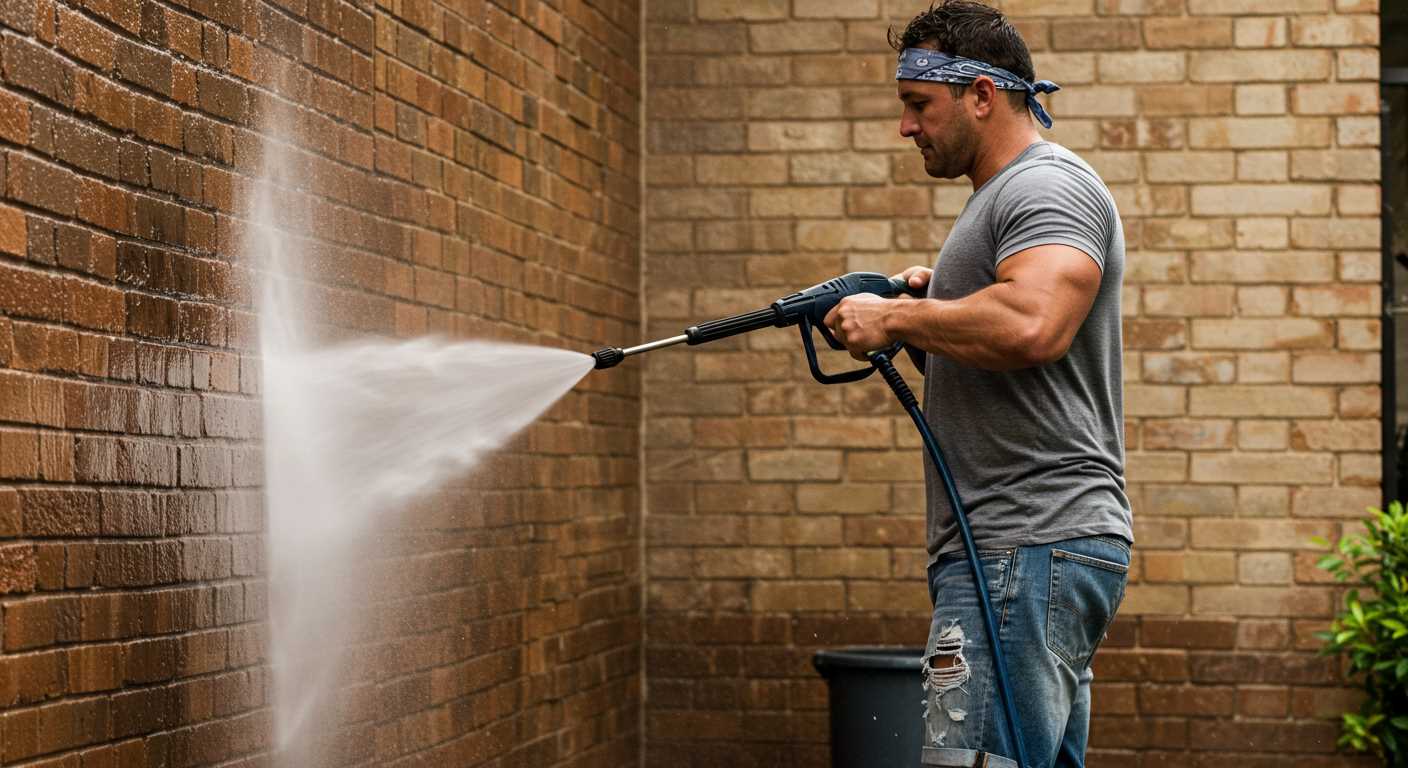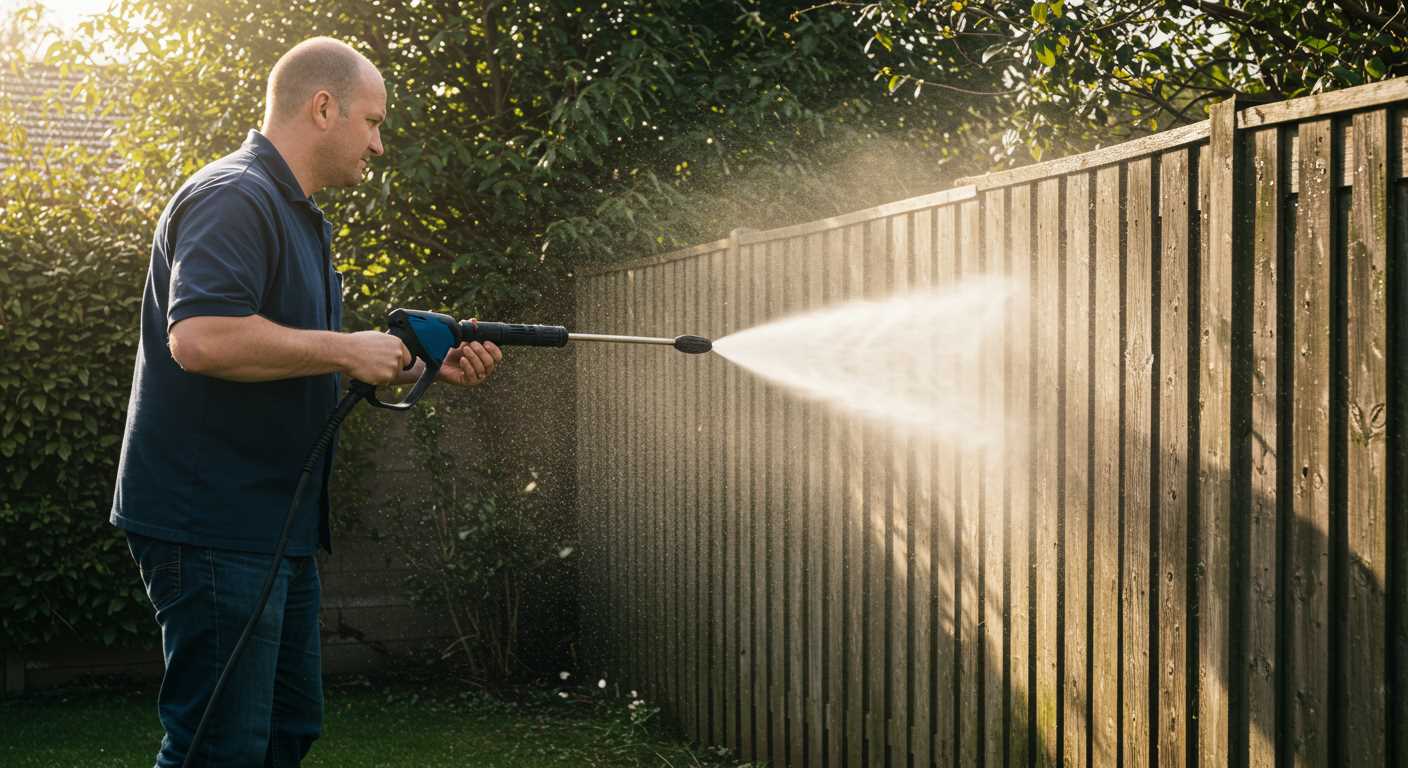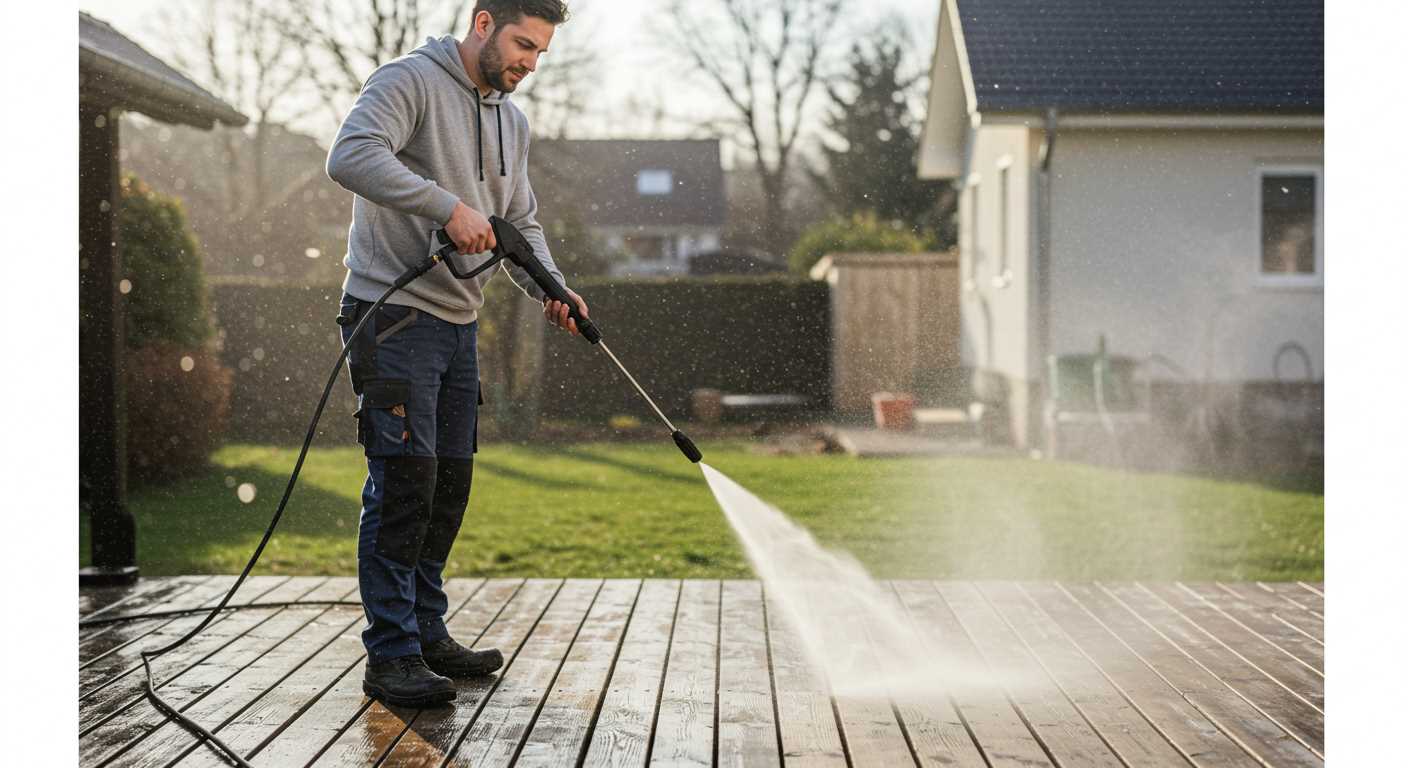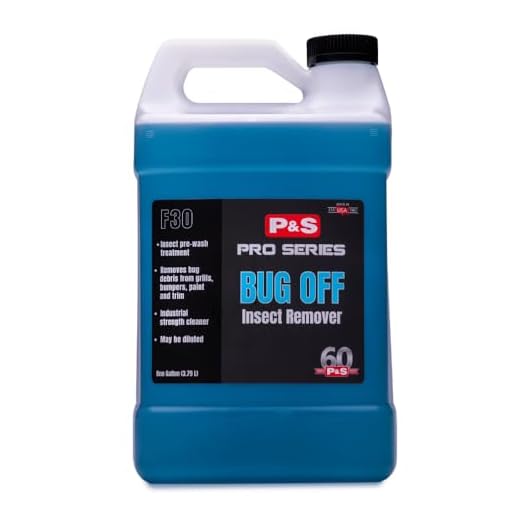



For optimal results with your high-pressure cleaning equipment, I recommend using a biodegradable detergent specifically formulated for this purpose. These products effectively break down dirt and grime without harming the environment or damaging surfaces.
For instance, the Simple Green Pro 3 Plus is an excellent choice for a variety of surfaces, including concrete, brick, and metal. Its concentrated formula allows for dilution, ensuring that you achieve the right strength for your specific cleaning task.
If your project involves removing stubborn grease or oil stains, the Krud Kutter cleaner excels in tough situations. It’s non-toxic and incredibly effective, making it suitable for automotive uses as well.
For softer surfaces like wood or painted areas, I suggest opting for a gentle cleaner such as the Golden Eagle biodegradable cleaner. This is designed to lift dirt without causing damage, ensuring that your surfaces remain intact and look their best.
Lastly, always check the manufacturer’s recommendations for your equipment to ensure compatibility with the selected detergent. This practice maintains machine performance and prolongs its lifespan, providing peace of mind as you tackle your cleaning tasks.
Recommended Solutions for My Pressure Equipment
For effective cleaning, I rely on biodegradable detergents that are safe for the environment while still delivering outstanding results. Brands like Simple Green and EcoSMART offer formulations specifically designed for high-velocity applications, ensuring thorough dirt and grime removal.
A concentrated alkaline solution is also beneficial for heavy-duty tasks, especially for concrete and similar surfaces. I typically opt for products with sodium hydroxide or potassium hydroxide in their ingredients for maximum efficacy.
For vehicles and delicate surfaces, a pH-neutral shampoo is ideal. I often choose formulations designed for automotive applications to prevent damage to paint while ensuring a spotless finish.
For mildew and mould stains, I turn to specialized mildew removers that are safe for use with high-powered cleaners. These products contain mildewcides that attack fungi effectively, keeping surfaces clean longer.
Lastly, always follow the manufacturer’s guidelines regarding dilution rates and compatibility with your specific equipment to avoid any potential damage or warranty issues.
Choosing the Right Detergent for Different Surfaces
For effective cleaning, it’s crucial to match the liquid with the surface being serviced. For outdoor paved areas, opt for a formula specifically designed for concrete or stone. It will penetrate the tough grime and moss layers. Make sure to mix according to the manufacturer’s guidelines for optimum results.
Wood Surfaces

For wooden decks and fences, select a biodegradable solution that won’t harm plants or the environment. Look for products formulated to eliminate mildew and prevent discolouration. These are generally mild yet efficient enough to lift dirt without causing damage to the wood fibres.
Vehicle Exteriors
When cleaning car exteriors, pick a suitable automotive product. They often contain wax and polymers that enhance shine while providing protection. Ensure it is compatible with your equipment and safe for all surface types, including paint and glass, to maintain the vehicle’s finish.
Understanding Concentration Levels: How Much to Use
For optimal results, I recommend following the manufacturer’s guidelines for dilution ratios specified on the concentrate label. Each product varies, and adhering to these instructions ensures maximum efficiency without damaging surfaces or equipment.
Dilution Guidelines
- Standard cleaning solutions typically require a dilution of 1:10 to 1:20, meaning one part detergent to ten or twenty parts water.
- Heavily soiled surfaces may benefit from a stronger mix, perhaps around 1:5, but always test on a small area first.
- For delicate materials like wood, consider a more diluted solution, such as 1:30.
Testing Concentration
Before applying the solution broadly, it’s wise to conduct a spot test to check for any adverse reactions. Here’s how to proceed:
- Apply a small amount of the diluted solution to an inconspicuous area.
- Observe for any changes in colour or texture for a couple of minutes.
- If no negative reactions occur, the dilution is likely safe for wider use.
Ultimately, always remember that less is often more when it comes to cleaning agents. Over-concentration can lead to residue build-up and potential damage, so err on the side of caution and adjust as necessary based on your specific application and the results observed.
Eco-Friendly Options for Eco-Conscious Users
.jpg)
I recommend opting for biodegradable cleaners that contain natural ingredients. Many brands offer formulations that are free from harsh chemicals, making them safe for the environment. Look for products labelled as non-toxic and phosphate-free to minimise environmental impact.
Top Eco-Friendly Brands

Here are several trusted brands that produce eco-friendly formulations suitable for outdoor cleaning:
| Brand | Product Name | Key Features |
|---|---|---|
| Simple Green | All-Purpose Cleaner | Non-toxic, biodegradable, safe around plants and animals. |
| Bio Kleen | Household Cleaner | Plant-based surfactants, concentrated formula, effective on tough stains. |
| Seventh Generation | Multi-Surface Cleaner | Free from synthetic fragrances and dyes, made from biodegradable ingredients. |
| Mrs. Meyer’s | Cleansing Concentrate | Aromatherapeutic, derived from essential oils, effective yet gentle. |
Homemade Solutions

Creating your own cleaner can be a great eco-friendly alternative. A simple mixture of vinegar and water works wonders. Combine equal parts and use it for light cleaning tasks. For grease stains, add a few drops of dish soap to enhance its efficacy.
Using eco-conscious products not only reflects your values but also contributes to a healthier planet. Choosing sustainable options ensures that your cleaning routine is as kind to nature as it is effective in achieving results.
Common Cleaning Agents to Avoid with Pressure Washers
Chlorine bleach is a significant hazard. It can corrode metal parts and damage seals, leading to costly repairs or replacements. Opt for oxygen bleach if a disinfectant is necessary.
Acids such as muriatic acid create risks for equipment and surfaces alike. They can etch and ruin finishes, with potential harm to landscapes surrounding the cleaning area. Choose safer alternatives specifically designed for the surfaces in question.
Highly abrasive substances are another category to steer clear of. These can scratch and damage various materials, leaving undesirable marks or requiring refinishing. Stick with non-abrasive options to maintain the integrity of your surfaces.
Petroleum-Based Products
Petroleum-based solutions are incompatible with many machines. They can create clogs and lead to uneven spraying, resulting in unsatisfactory results. Always check for compatibility before considering any product containing petroleum derivatives.
Harsh Solvents
Solvents like acetone or paint thinner should never be applied. Their harsh chemical composition can corrode components and create safety hazards. Opt for specialty cleaners formulated for specific tasks instead.
My experience indicates that avoiding these problematic agents not only prolongs the lifespan of your cleaning equipment but also ensures effective results. Always prioritise manufacturer recommendations for optimal performance and safety.
How to Properly Mix and Apply Cleaning Solutions
For optimal results, dilute solutions according to the manufacturer’s guidelines. Generally, a standard ratio is 1 part detergent to 10 parts water. Use a measuring cup for precision to avoid concentrated mixtures that may damage surfaces or your equipment.
First, pour the measured amount of detergent into a clean bucket. Then, add the specified volume of water slowly, mixing gently to prevent excessive foam. Always mix outside or in a well-ventilated area to minimise strong odours and potential inhalation of fumes.
For optimal application, utilise the designated injection system of your apparatus. Attach the correct nozzle before filling the tank with the mixed solution. Make sure to prime the system, allowing a small amount of the cleaning mixture to clear the lines before you start. This ensures a consistent flow and proper dispersion across the surface.
When applying the mixture, choose a low-pressure setting to prevent damage to the substrate being cleaned. Begin at the highest point of the surface, using a sweeping motion to evenly coat the area. Allow the solution to dwell for the recommended time–usually around 5 to 15 minutes–before rinsing thoroughly to remove any residues.
After completing your task, flush the detergent tank with clean water to avoid clogging. Regular maintenance will prolong the life of your equipment and ensure it operates smoothly during future projects.
Remember to wear protective gear, like gloves and goggles, especially when handling chemical solutions. Always follow safety instructions provided by the manufacturer to ensure a risk-free experience.
Identifying Specific Stains: Tailored Solutions for Best Results
For specific stains, selecting the right formulation can dramatically enhance your cleaning endeavours. For instance, oil stains necessitate a degreaser with strong surfactants. These compounds effectively break down hydrocarbons, facilitating their removal. Areas like driveways are often plagued by such marks, and employing a suitable product can restore their appearance without extensive scrubbing.
Rust marks, typically found on metal surfaces, require acidic cleaners. Formulations containing phosphoric acid are particularly effective, as they react with the rust, converting it into a removable compound. When dealing with such stains, apply the solution directly to the affected areas before rinsing, ensuring thorough exposure to yield the best outcome.
For mildew and mould, a product containing sodium hypochlorite is ideal. This type of solution penetrates organic materials, killing spores effectively. It works exceptionally well on outdoor surfaces like patios and decks, which are common breeding grounds. Always rinse well after application to prevent damage to surrounding vegetation.
In instances of dirt and grime accumulation, especially on non-painted surfaces, a simple alkaline cleaner often suffices. These soaps and detergents lift embedded dirt particles, making rinsing straightforward. For versatile use, select something gentle yet capable of tackling tougher build-up.
Paint stains, on the other hand, call for solvents specifically designed for paint removal. Be cautious and test small areas beforehand, as these substances can damage finishes if not used correctly. Identifying the type of paint will also guide the solvent selection process.
Lastly, for everyday cleaning tasks, all-purpose formulations can be highly efficient. These solutions balance strength and gentleness, suitable for various surfaces without risking damage. They streamline the cleaning process while delivering satisfactory results across different applications.










